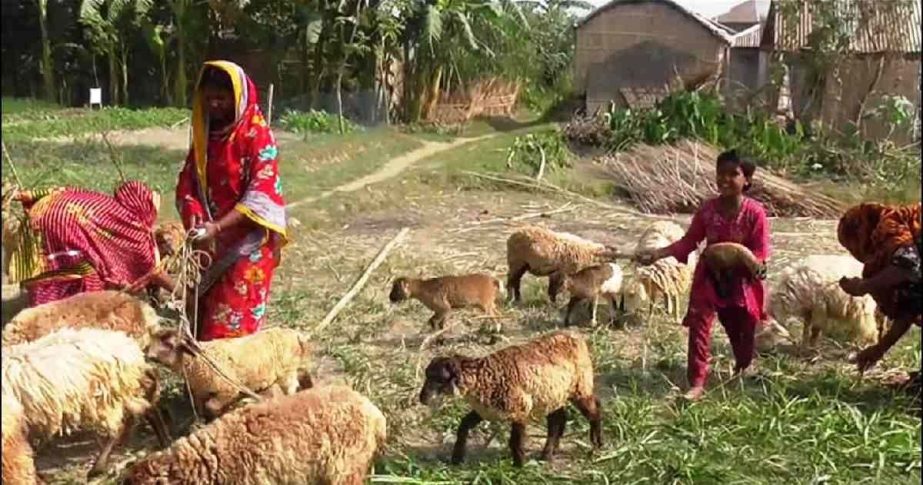
UNB, Gaibandha
The main worries of sheep farmers are heat stress, drought and flooding. Many lose their cattle, sheep, goat and poultry farms due to floods. Thinking ahead is crucial to cut costs, risks and concerns in future.
Also, climate change could present more challenges to cattle and sheep producers in the future, impacting production by hurting fertility or growth.
There is no way to prepare for every situation that arises in a disaster.
However, advanced planning can help the producers minimise the loss of animal lives and the health problems associated with all disasters.
Studies suggest more research for drought-tolerant cattle, sheep, goat and poultry breeds.
The women of Gaibandha’s disaster-prone Jamunar Char, for example, have learned to stand on their own two feet after raising disaster-ready sheep.
Improved breed, disaster tolerance, and high fertility rate of these animals are encouraging the women of the char to raise them in bigger numbers.
Saiduzzaman, chairman of Mollar Char, said: “Gaibandha has 165 chars across the rivers Teesta, Jamuna and Brahmaputra. At least 3 lakh people live here.”
Shilpi Begum, a resident of one of the chars, said people of these areas depend on agriculture and livestock for their livelihood and survival.
“We are happy people even after braving all the disasters throughout the year. Selling cattle, goats, chickens, ducks, helps us overcome many dangers and hardships.”
“Although people would raise livestock here before, no one was involved in sheep farming. I started with one sheep and now own five. Selling these animals will help me weather the storm and also turn my wheel of fortune,” the char dweller said.
Sajeda Begum said non-governmental organisation Friendship has given us an improved breed of sheep, which is the result of the Bangladesh Agricultural University’s research.
“These animals are taller, stronger, and beautiful. They weigh at least 30kg and give birth four times a year.”
Dibakar Biswas, an official of Friendship, said: “The people of the chars have to fight floods, droughts, river erosions and other disasters all the year, making it difficult for them to save livestock.”
“The Bangladesh Agricultural University in Mymensingh has come up with a new breed of sheep, which has become very popular among the char people. These animals can be seen grazing across Kabilpur Char of Gaibandha’s Fulchhari.”
“Raising this breed of sheep does not cost much money. Also, these animals are disaster-tolerant, healthy, and large,” Momena Begum, a livestock keeper, said. “Two hundred and forty women started with one sheep each. All of them now own eight to ten sheep.”
“This new breed of sheep is bringing fresh hope to people of the chars. These sheep were developed by crossing domestic breeds with superior breeds,” District Livestock Officer Dr Md Masudur Rahman said.
The size of Bangladesh’s livestock population stood at 4221.80 lakh, which included 36.79 lakh sheep, in the fiscal year 2020-21, according to the Department of Livestock Services.

